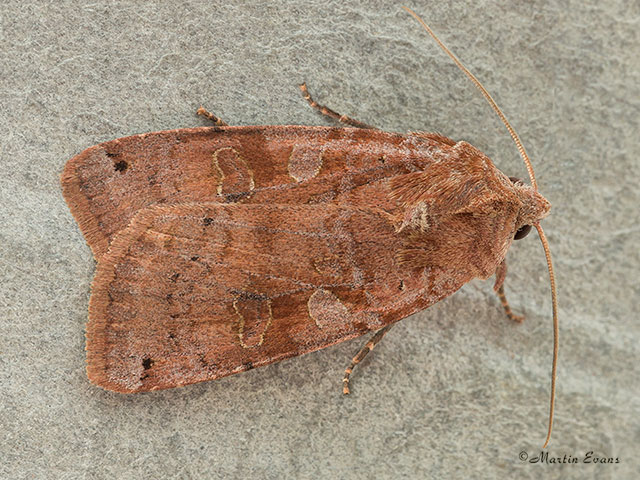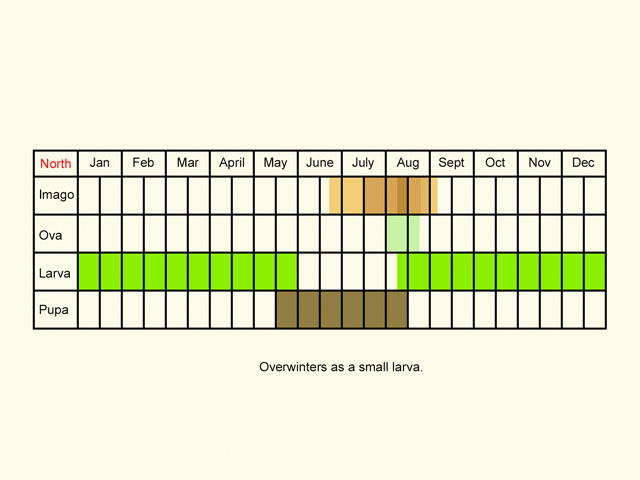Noctuidae
73.353 Dotted Clay Xestia baja ([Denis & Schiffermüller], 1775)
Common
Similar species: The black dots on the leading edge near the wing tip distinguish this moth from other British and Irish species.
Forewing: 17 to 20mm
Habitats: Deciduous woodland, carr, heathland, moorland, mosses, marshland, stream margins, lake margins and scrubby calcareous grassland
Habits: The moth visits flowers after dark and is attracted to sugar and light.
Foodplant: The nocturnal larva feeds at first on Dandelion, Common Nettle, Primrose, docks and other herbaceous plants. In the spring it feeds on woody species such as birches, Blackthorn, sallows, Bog Myrtle and Bramble, hiding near the ground during the day. It pupates in a flimsy cocoon just under the soil surface.
On the European mainland it has also been recorded feeding on sorrel, Russian Broom, Alder, Aspen and Wild Cherry.




